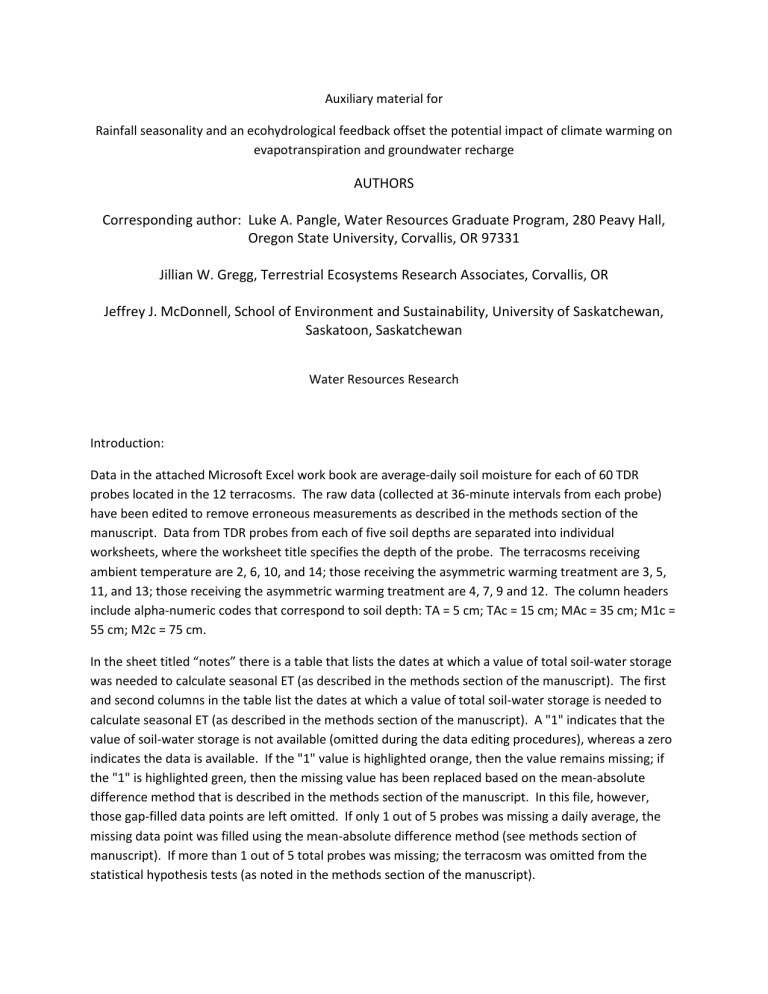Auxiliary material for

Auxiliary material for
Rainfall seasonality and an ecohydrological feedback offset the potential impact of climate warming on evapotranspiration and groundwater recharge
AUTHORS
Corresponding author: Luke A. Pangle, Water Resources Graduate Program, 280 Peavy Hall,
Oregon State University, Corvallis, OR 97331
Jillian W. Gregg, Terrestrial Ecosystems Research Associates, Corvallis, OR
Jeffrey J. McDonnell, School of Environment and Sustainability, University of Saskatchewan,
Saskatoon, Saskatchewan
Water Resources Research
Introduction:
Data in the attached Microsoft Excel work book are average-daily soil moisture for each of 60 TDR probes located in the 12 terracosms. The raw data (collected at 36-minute intervals from each probe) have been edited to remove erroneous measurements as described in the methods section of the manuscript. Data from TDR probes from each of five soil depths are separated into individual worksheets, where the worksheet title specifies the depth of the probe. The terracosms receiving ambient temperature are 2, 6, 10, and 14; those receiving the asymmetric warming treatment are 3, 5,
11, and 13; those receiving the asymmetric warming treatment are 4, 7, 9 and 12. The column headers include alpha-numeric codes that correspond to soil depth: TA = 5 cm; TAc = 15 cm; MAc = 35 cm; M1c =
55 cm; M2c = 75 cm.
In the sheet titled “notes” there is a table that lists the dates at which a value of total soil-water storage was needed to calculate seasonal ET (as described in the methods section of the manuscript). The first and second columns in the table list the dates at which a value of total soil-water storage is needed to calculate seasonal ET (as described in the methods section of the manuscript). A "1" indicates that the value of soil-water storage is not available (omitted during the data editing procedures), whereas a zero indicates the data is available. If the "1" value is highlighted orange, then the value remains missing; if the "1" is highlighted green, then the missing value has been replaced based on the mean-absolute difference method that is described in the methods section of the manuscript. In this file, however, those gap-filled data points are left omitted. If only 1 out of 5 probes was missing a daily average, the missing data point was filled using the mean-absolute difference method (see methods section of manuscript). If more than 1 out of 5 total probes was missing; the terracosm was omitted from the statistical hypothesis tests (as noted in the methods section of the manuscript).








